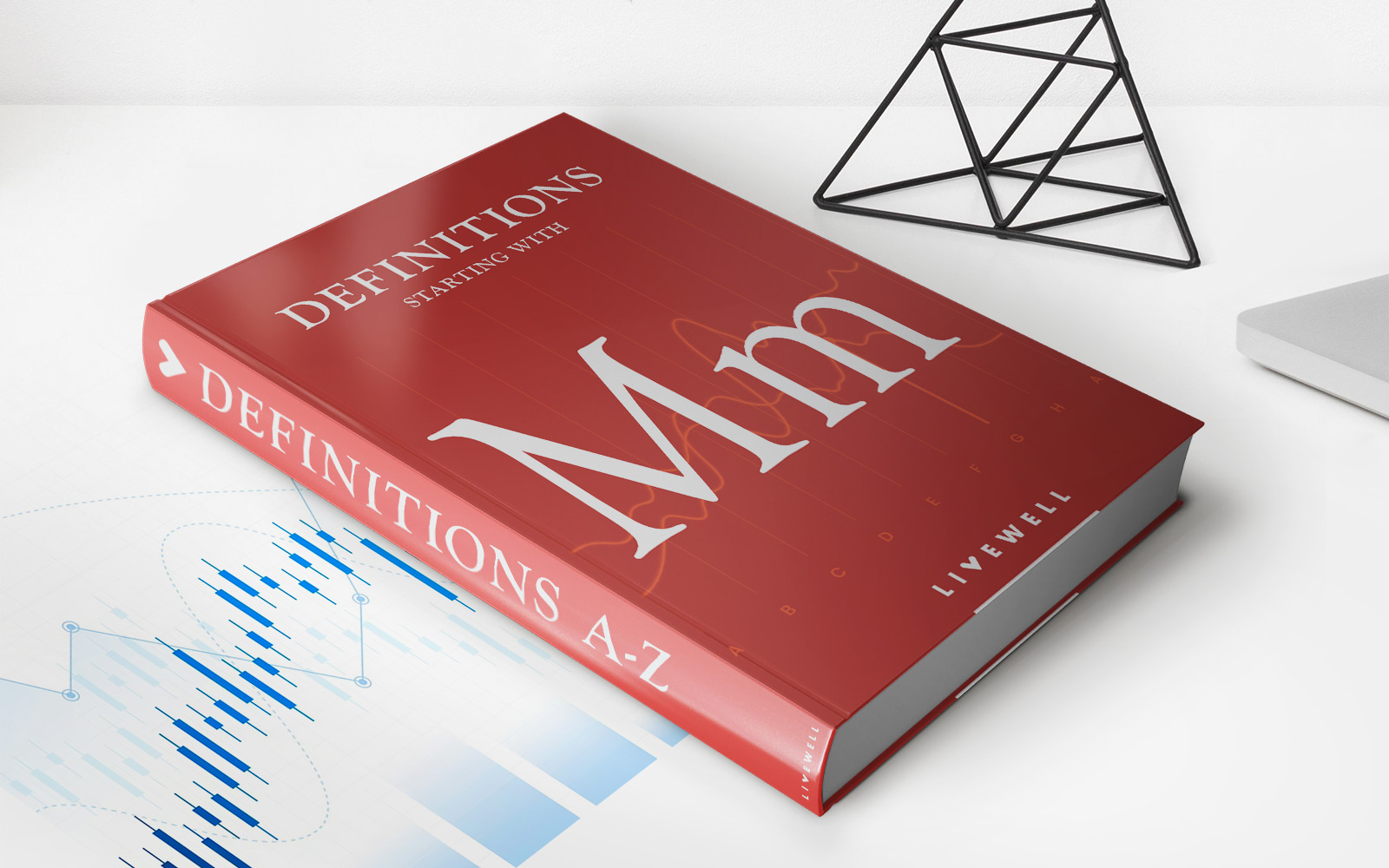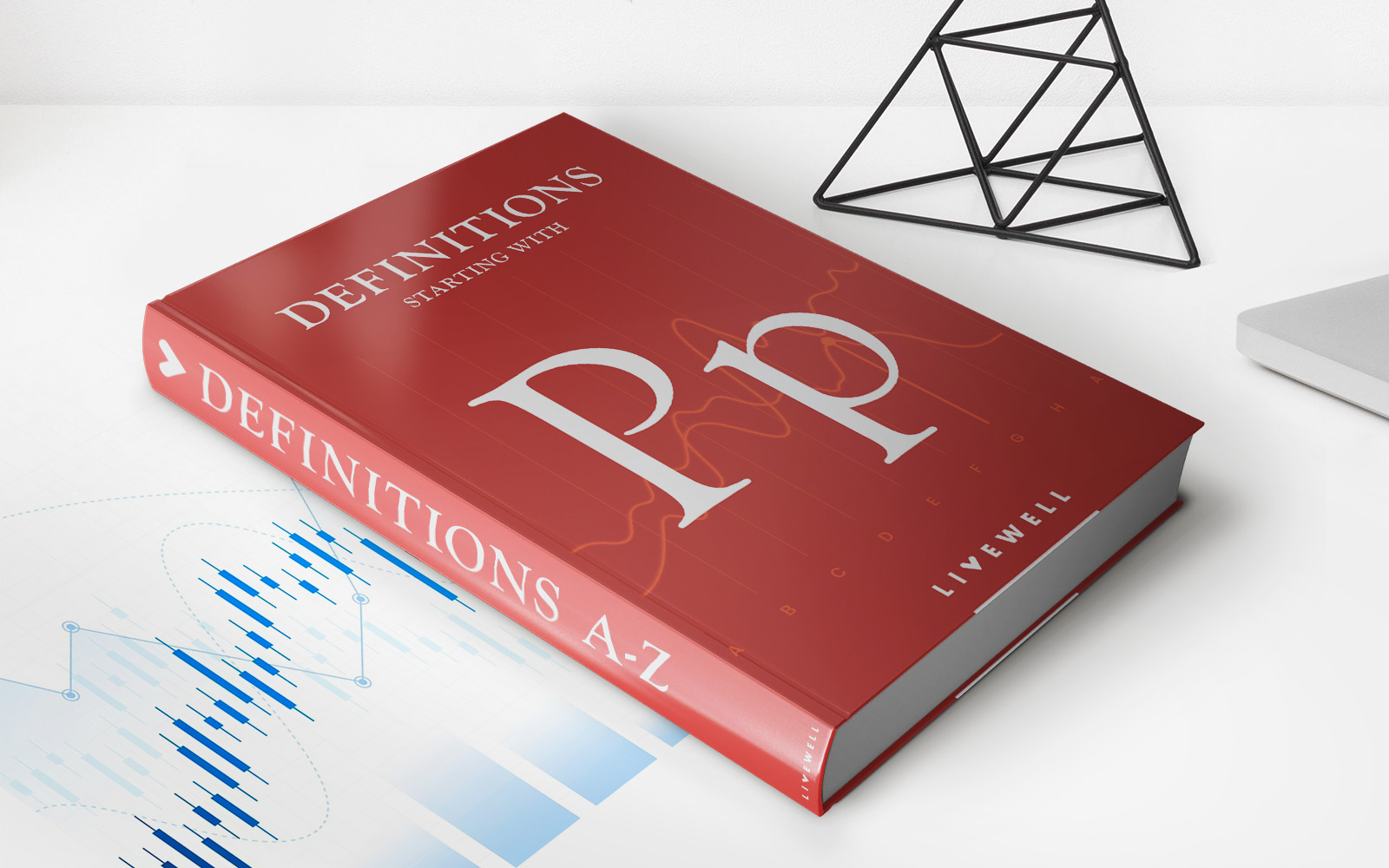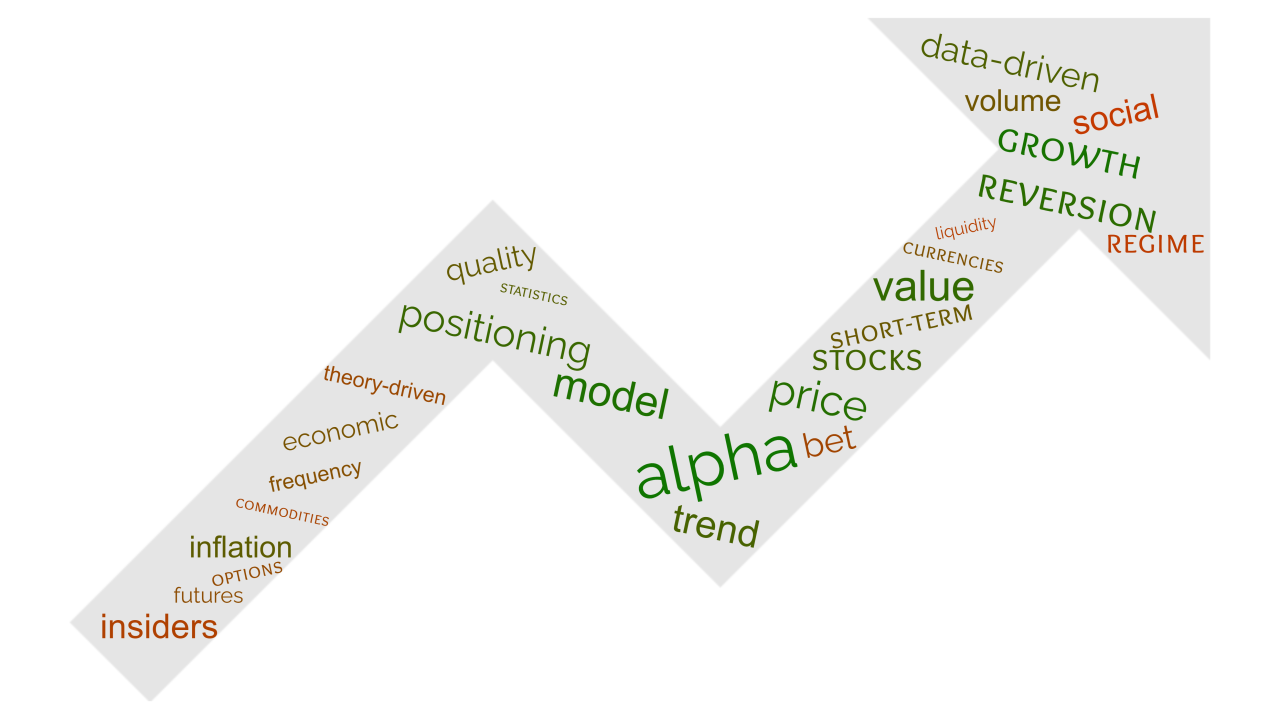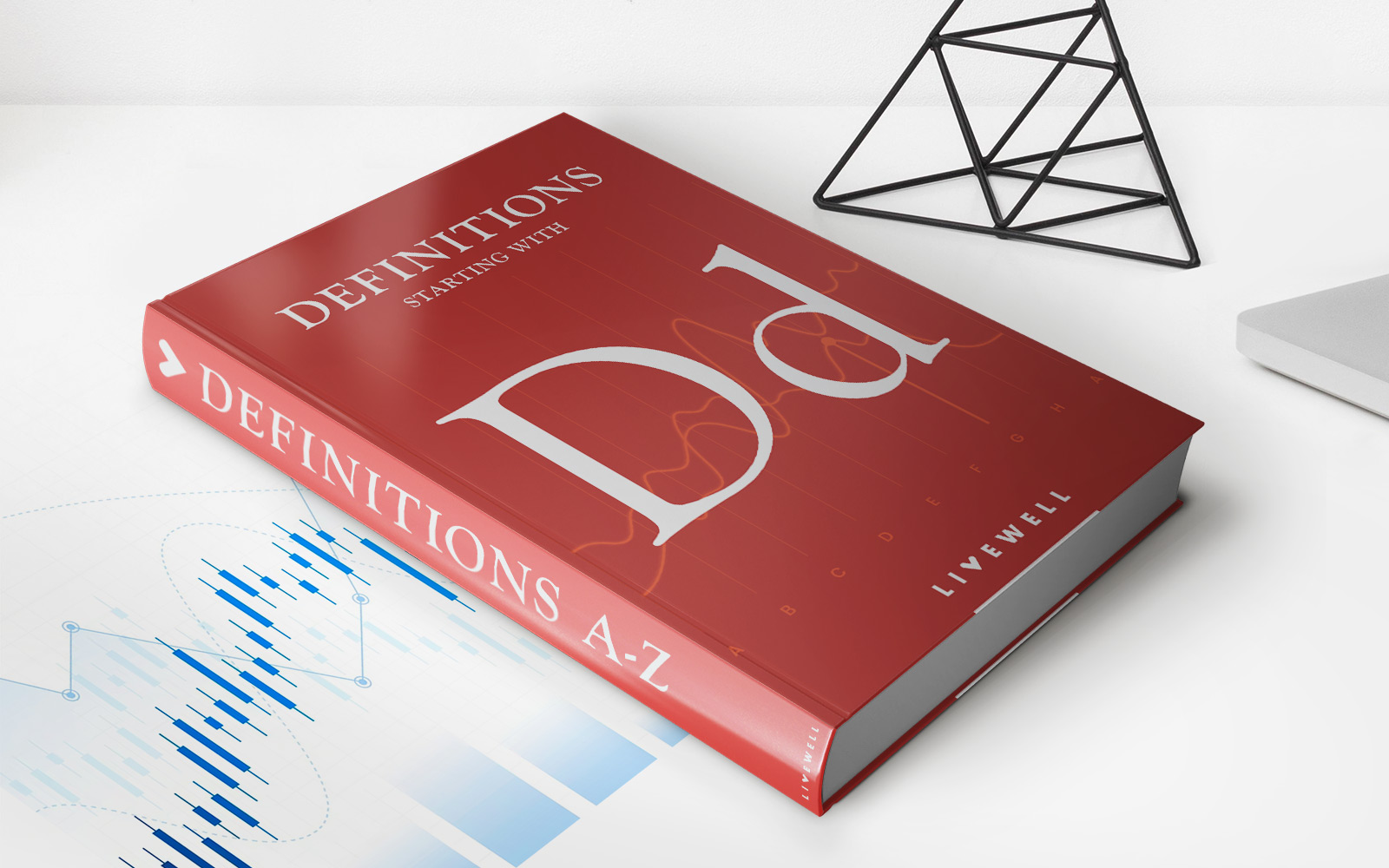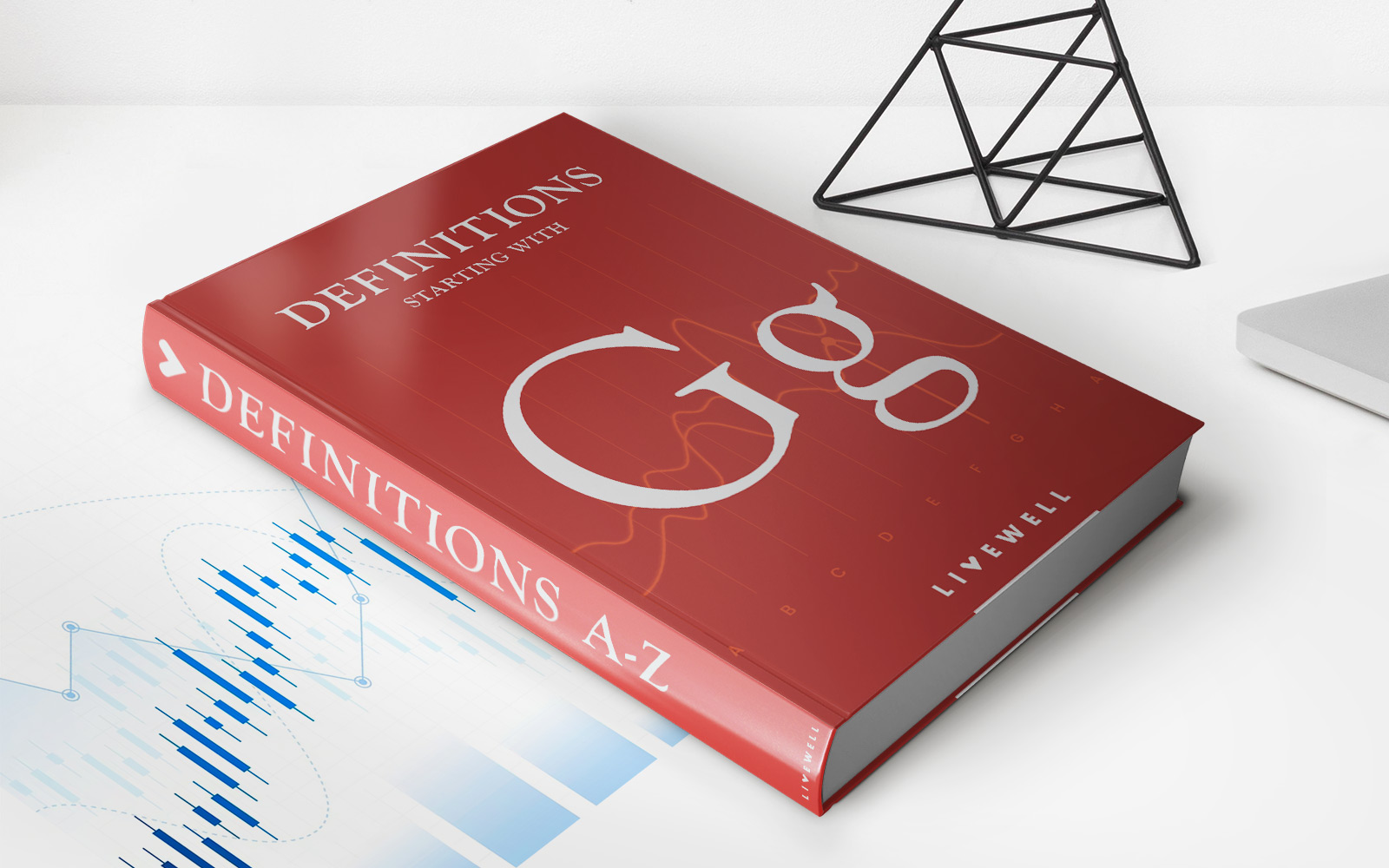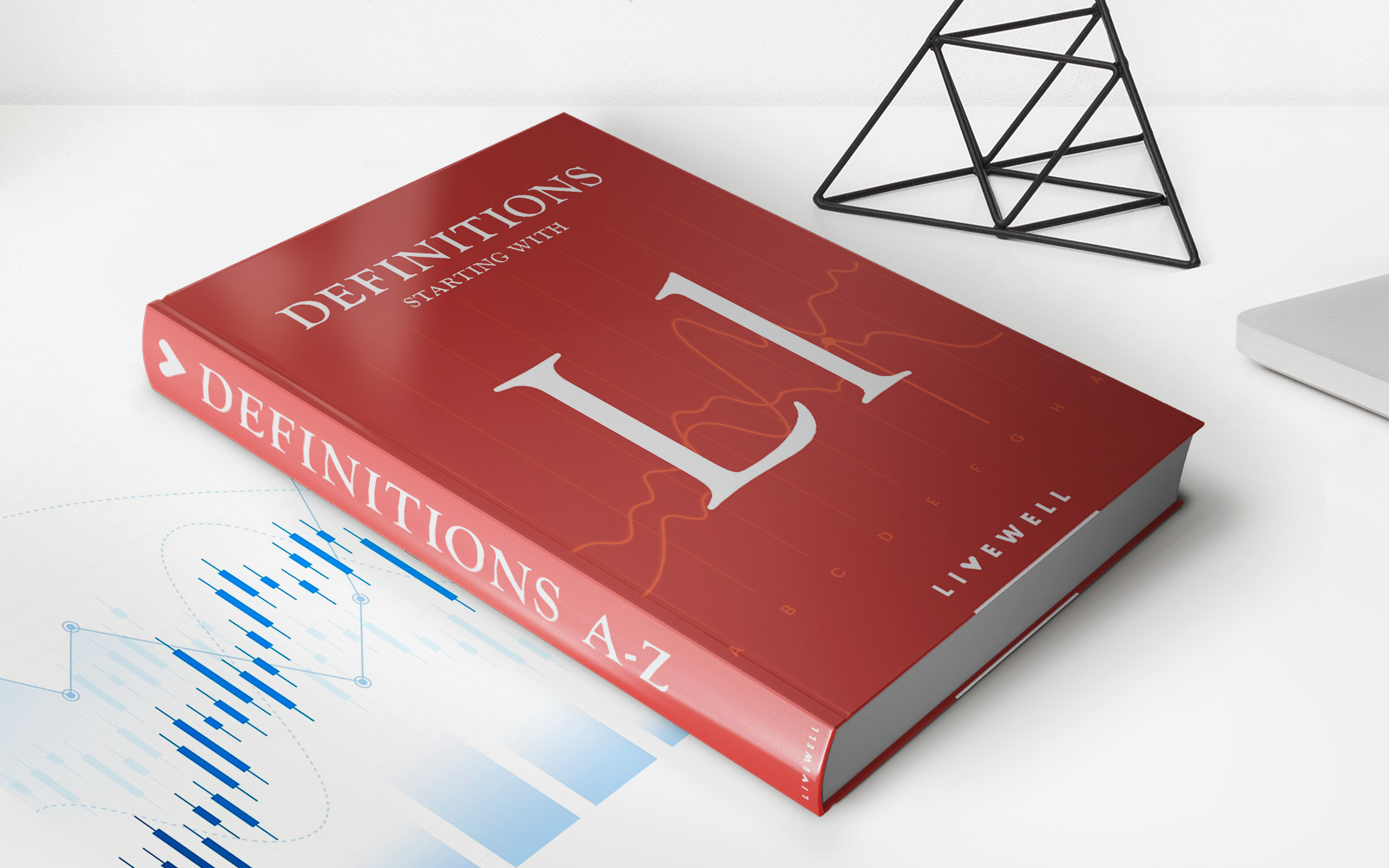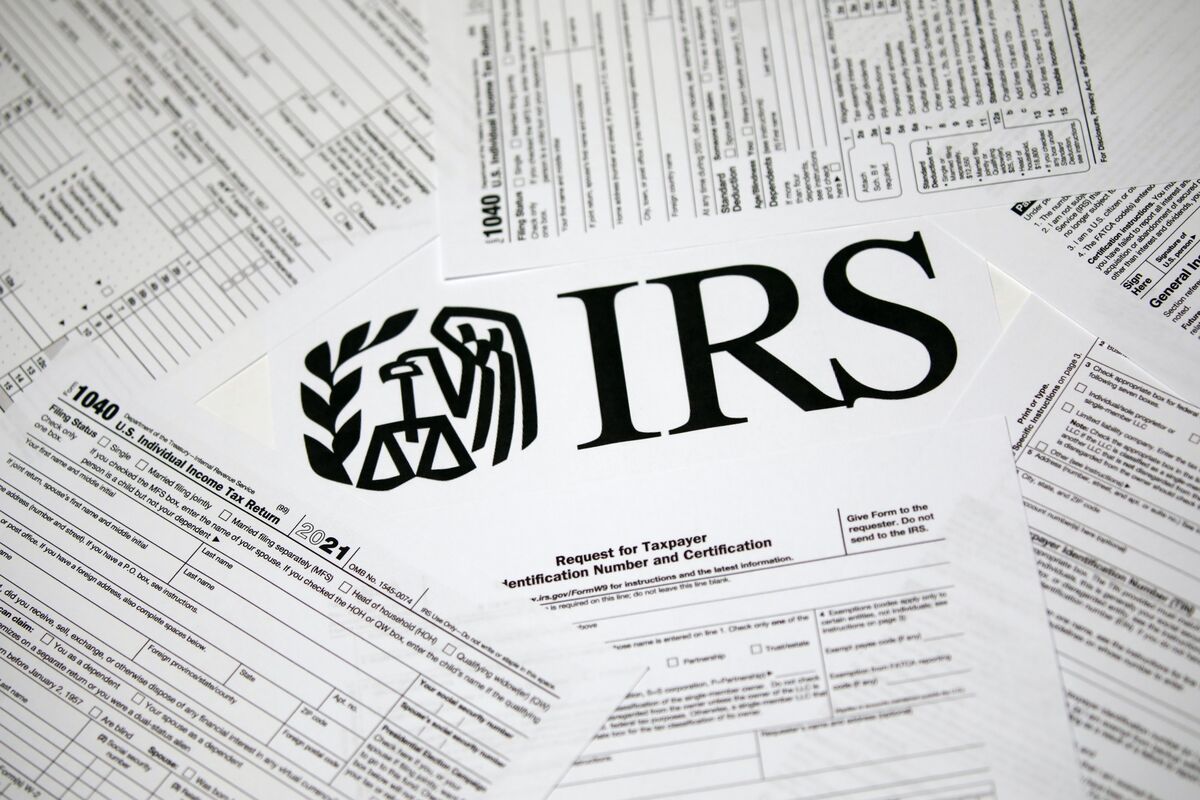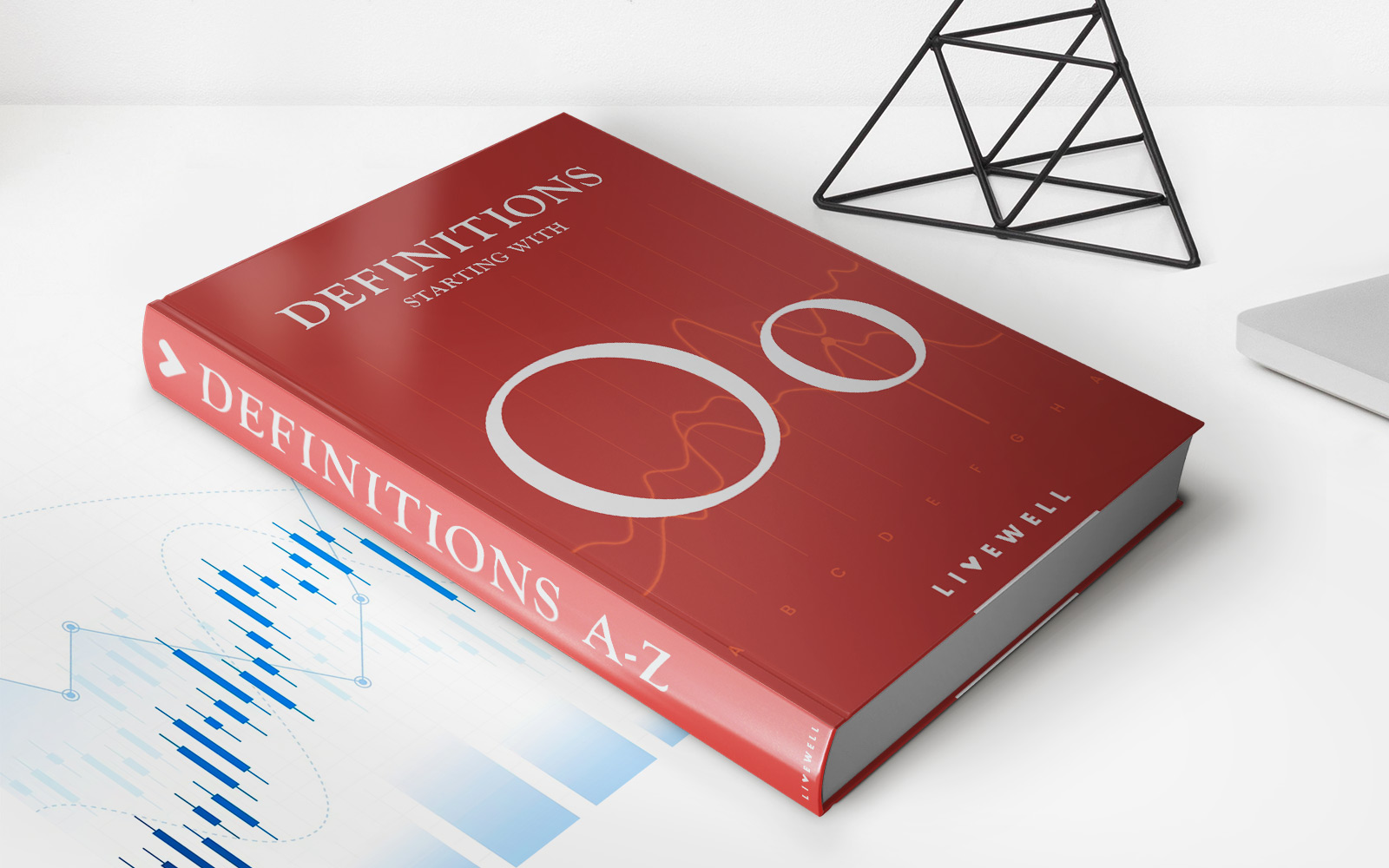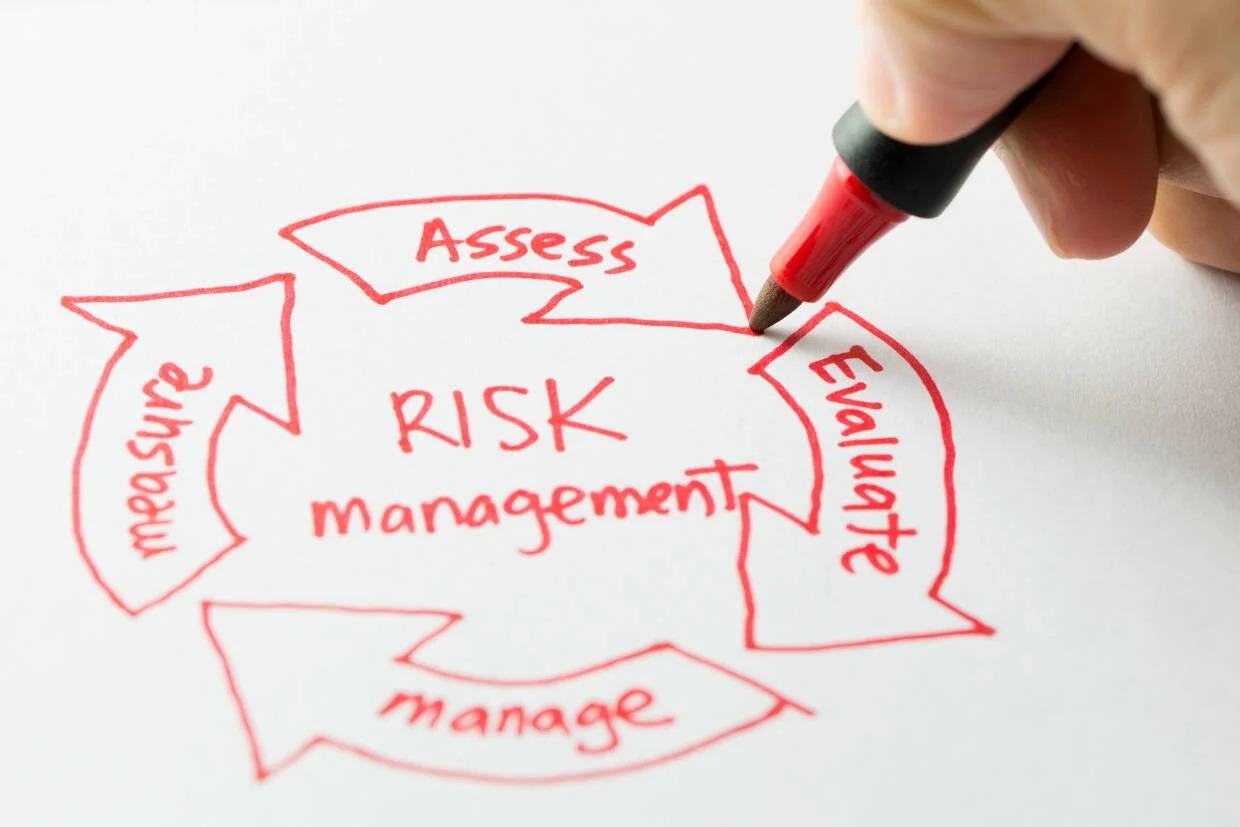

Finance
How To Measure Credit Risk
Published: January 4, 2024
Learn how to accurately measure credit risk and make informed financial decisions with our comprehensive guide on credit risk measurement in finance.
(Many of the links in this article redirect to a specific reviewed product. Your purchase of these products through affiliate links helps to generate commission for LiveWell, at no extra cost. Learn more)
Table of Contents
Introduction
Credit risk refers to the potential for a borrower to default on their financial obligations, leading to potential losses for lenders and investors. It has always been a critical aspect of financial management, as lenders need to assess the creditworthiness of borrowers before extending credit.
In today’s complex and interconnected financial world, measuring credit risk is more important than ever. With the volatility of markets, economic downturns, and global financial crises, institutions need effective tools and methods to evaluate credit risk and make informed decisions.
The measurement of credit risk allows lenders and investors to understand the level of risk associated with a particular borrower or investment portfolio. It helps in determining the probability of default, the potential loss in the event of default, and the exposure at default. By quantifying credit risk, institutions can set appropriate interest rates, establish risk management strategies, and ensure the health and stability of their portfolios.
Effective credit risk measurement involves analyzing various factors that can impact a borrower’s ability to repay their debt obligations. These factors include financial statements, credit history, industry trends, economic indicators, and regulatory environment. By understanding these factors, lenders can accurately assess the creditworthiness of a borrower and mitigate potential risks.
This article explores the importance of measuring credit risk, the factors that affect credit risk, and the methods and techniques used by institutions to quantify and manage credit risk effectively. We will delve into credit scoring models, probability of default, loss given default, exposure at default, and credit rating agencies’ role in credit risk assessment.
By gaining a comprehensive understanding of credit risk measurement, lenders, investors, and financial institutions can make more informed decisions, improve risk management practices, and safeguard their financial health in an increasingly uncertain economic landscape.
Importance of Measuring Credit Risk
Measuring credit risk is of paramount importance for financial institutions, lenders, and investors alike. It allows them to assess the likelihood of default by borrowers and make informed decisions regarding lending and investment activities. Here are some key reasons why measuring credit risk is crucial:
- Risk Assessment: Measuring credit risk enables financial institutions to evaluate the potential risks associated with extending credit. By assessing the creditworthiness of borrowers, lenders can determine the likelihood of default and the potential losses they may incur. This helps in setting appropriate interest rates, loan terms, and credit limits.
- Capital Adequacy: Accurate measurement of credit risk is essential for determining the level of capital needed to cover potential losses. Financial institutions are required to maintain adequate capital reserves to absorb unexpected losses due to credit defaults. Measuring credit risk helps institutions in assessing their capital adequacy and meeting regulatory requirements.
- Portfolio Management: Measuring credit risk helps lenders and investors in effectively managing their portfolios. By analyzing the credit risk of individual borrowers or a portfolio of loans or investments, institutions can diversify their risk exposure and allocate resources wisely. This leads to improved risk-adjusted returns and a more stable portfolio.
- Risk Mitigation: Measuring credit risk enables institutions to identify high-risk borrowers or assets and take proactive measures to mitigate potential risks. By identifying early warning signs of financial distress, lenders can implement risk management strategies such as loan restructuring, collateralization, or loan provisioning to minimize losses in the event of default.
- Business Decision-Making: Credit risk measurement provides valuable insights for making strategic business decisions. Lenders can use credit risk assessment to prioritize lending opportunities, evaluate the viability of new markets or industries, and identify potential risks associated with specific borrowers or sectors. It helps in optimizing decision-making processes and enhancing overall business performance.
- Investor Confidence: Accurate measurement and effective management of credit risk enhance investor confidence in financial institutions. When investors have confidence that institutions have robust credit risk assessment practices in place, they are more likely to invest in the institution’s products or services. This improves the institution’s reputation and attracts capital from investors.
Overall, measuring credit risk is essential for financial stability, risk management, portfolio optimization, and informed decision-making. By quantifying credit risk, institutions can navigate through economic uncertainties, mitigate potential losses, and ensure the sustainability of their lending and investment activities.
Factors Affecting Credit Risk
Several factors contribute to the level of credit risk associated with a borrower or investment portfolio. Understanding these factors is crucial for accurately measuring and assessing credit risk. Here are some key factors that can affect credit risk:
- Financial Health: The financial health of a borrower plays a significant role in determining credit risk. Lenders assess factors such as the borrower’s income, cash flow, debt-to-income ratio, and financial statements to gauge their ability to repay debts. A borrower with stable and sufficient income, low debt burden, and positive financial indicators poses lower credit risk.
- Credit History: Past credit behavior is a critical factor in assessing credit risk. Lenders review a borrower’s credit history, including their payment history, credit utilization, and any previous delinquencies or defaults. A borrower with a strong credit history and a track record of timely payments indicates lower credit risk.
- Industry and Economic Conditions: Credit risk is influenced by the overall economic and industry conditions. Lenders consider factors like the health of the industry in which the borrower operates, market trends, unemployment rates, and GDP growth. In a recession or a downturn, credit risk tends to increase as borrowers may experience financial difficulties.
- Collateral and Security: The presence of collateral or security for a loan can mitigate credit risk. Lenders evaluate the quality and value of collateral to determine the potential loss in case of default. Adequate collateral reduces credit risk as it provides a secondary source of repayment for the lender.
- Regulatory Environment: The regulatory framework and legal environment can impact credit risk. Lenders consider regulations related to lending practices, consumer protection, and bankruptcy laws. Changes in regulations can affect the risk associated with lending and may require adjustments in credit risk management strategies.
- Geopolitical Factors: Geopolitical factors such as political stability, government policies, and international relations can influence credit risk. Borrowers operating in politically unstable regions or countries with uncertain economic policies may have higher credit risk due to potential disruptions to their business operations or repayment capabilities.
It is important for lenders and investors to analyze and assess these factors comprehensively to accurately measure credit risk. By considering the financial health of borrowers, their credit history, industry and economic conditions, collateral, regulatory environment, and geopolitical factors, institutions can make informed decisions, mitigate risks, and ensure the soundness of their lending and investment activities.
Methods of Measuring Credit Risk
Measuring credit risk involves using various methods and techniques to quantify the level of risk associated with a borrower or investment portfolio. These methods provide insights into the probability of default, potential loss in the event of default, and the exposure at default. Here are some commonly used methods of measuring credit risk:
- Credit Scoring Models: Credit scoring models are statistical models that use borrower information to assign a credit score. These models analyze factors such as credit history, income, employment status, and other relevant variables to assess the creditworthiness of a borrower. Lenders use credit scores to determine the level of credit risk associated with an individual borrower.
- Probability of Default (PD): The probability of default measures the likelihood that a borrower will fail to meet their financial obligations. It is usually expressed as a percentage over a specific time period. PD can be estimated using historical data, financial ratios, credit ratings, and credit scoring models. A higher PD indicates a higher level of credit risk.
- Loss Given Default (LGD): LGD quantifies the potential loss that a lender may incur if a borrower defaults on their debt obligations. It represents the percentage of the total exposure that is expected to be lost in the event of default. LGD is influenced by factors such as collateral, guarantees, and recovery rates in the event of default.
- Exposure at Default (EAD): EAD refers to the total exposure a lender has to a borrower at the time of default. It includes the outstanding loan balance, accrued interest, unused credit lines, and any other potential claims. Accurately measuring EAD helps in assessing the potential loss in the event of default and setting appropriate risk management strategies.
- Credit Risk Measurement Techniques: Various quantitative techniques are used to measure credit risk, including statistical models such as logistic regression, time-series analysis, and simulation methods like Monte Carlo simulation. These techniques analyze historical data, macroeconomic variables, and borrower-specific information to estimate credit risk.
It is important to note that credit risk measurement methods should be tailored to the specific needs and characteristics of the institution or investment portfolio. Institutions may use a combination of these methods and techniques to gain a comprehensive understanding of credit risk and make informed decisions regarding lending and investment activities.
Credit Scoring Models
Credit scoring models are commonly used in the financial industry to assess the creditworthiness of borrowers. These statistical models analyze various factors and assign a credit score to individuals or businesses, indicating their level of credit risk. Credit scoring models play a crucial role in measuring and managing credit risk. Here are some key points about credit scoring models:
- Factors Considered: Credit scoring models consider a wide range of factors to evaluate credit risk. These can include credit history, payment behavior, outstanding debts, income levels, employment history, and the length of credit history. By analyzing these factors, credit scoring models are able to assess the likelihood of default by a borrower.
- Statistical Techniques: Credit scoring models use statistical techniques to analyze historical data and identify patterns or relationships between borrower characteristics and credit risk. Techniques such as logistic regression, decision trees, and neural networks are commonly employed. These techniques help in building predictive models that can assign a credit score based on the input variables.
- Development and Validation: Credit scoring models are developed using historical data on borrower behavior and credit outcomes. The models are then validated to ensure their accuracy and reliability. Validation includes assessing the model’s predictive power, stability, and discrimination ability to identify good and bad credit risks.
- Scoring Scale: Credit scoring models assign a numerical value or credit score to individuals or businesses. The scoring scale typically ranges from a low-risk score to a high-risk score. Lenders can set specific cutoff points on the scoring scale to evaluate loan applications and determine the level of credit risk associated with a borrower.
- Benefits: Credit scoring models offer several benefits to lenders and financial institutions. They provide a standardized and objective way of assessing credit risk, allowing for efficient and consistent evaluation of loan applications. Credit scoring models also improve decision-making speed and accuracy, as they can quickly analyze large amounts of data and provide a credit risk assessment.
- Limitations: While credit scoring models are valuable tools for credit risk assessment, they do have limitations. They rely heavily on historical data, which may not capture recent changes in a borrower’s financial situation. Additionally, credit scoring models may not consider qualitative factors that can impact credit risk, such as industry-specific trends or economic events.
Credit scoring models have revolutionized the credit assessment process and have become an integral part of the lending industry. By utilizing these models, lenders can effectively measure credit risk, make informed lending decisions, and manage their loan portfolios more efficiently.
Probability of Default (PD)
The probability of default (PD) is a key quantitative measure used to assess and quantify credit risk. PD represents the likelihood that a borrower or counterparty will fail to meet their financial obligations within a specified time frame. It is a crucial component in credit risk measurement and plays a vital role in credit analysis, loan pricing, and risk management. Here are some important points to understand about the probability of default:
- Estimating PD: PD can be estimated using various methods and techniques. Historical data analysis, financial ratios, credit scoring models, and credit rating agencies are commonly used to estimate PD. These approaches rely on statistical analysis and historical patterns to assess the likelihood of default based on borrower characteristics and credit performance.
- Interpreting PD: PD is expressed as a percentage indicating the likelihood of default over a specific time period, typically a year. For example, a PD of 5% means there is a 5% probability that the borrower will default within a year. Lenders and investors use PD as a reference to gauge the creditworthiness and risk associated with potential borrowers or investments.
- Factors Influencing PD: PD is influenced by various factors that affect a borrower’s ability to meet their financial obligations. These factors include financial stability, credit history, industry conditions, economic indicators, and regulatory environment. By analyzing these factors, lenders can better assess the creditworthiness of the borrower and calculate an appropriate probability of default.
- PD and Credit Risk Assessment: PD is a crucial element in credit risk assessment. Lenders use PD to evaluate loan applications, set interest rates, and determine the appropriate level of risk mitigation measures, such as collateral requirements or loan provisions. A higher PD indicates a higher level of credit risk, while a lower PD suggests a lower probability of default.
- PD and Risk Management: PD plays a critical role in risk management. Banks, financial institutions, and investors use PD to allocate capital reserves for potential loan losses. Regulatory authorities also consider PD in assessing the adequacy of an institution’s capital and its ability to absorb credit losses. PD helps in identifying and managing credit risk exposures efficiently.
- Limitations of PD: While PD is a valuable measure of credit risk, it does have limitations. PD estimation relies on historical data, and economic or industry-specific conditions may change over time, affecting the accuracy of the PD calculation. Additionally, PD may not capture unforeseen events or macroeconomic shocks that can impact a borrower’s ability to repay their obligations.
The probability of default is a crucial concept in credit risk measurement and management. By accurately estimating and interpreting PD, lenders and investors can make informed decisions, set appropriate risk thresholds, and effectively manage credit risk in their portfolios.
Loss Given Default (LGD)
Loss Given Default (LGD) is a vital measure in credit risk analysis that quantifies the potential loss a lender may incur in the event of borrower default. LGD represents the percentage of the total exposure that is expected to be lost when a borrower is unable to fulfill their financial obligations. Understanding LGD is crucial for effective credit risk management. Here are some key points to understand about Loss Given Default:
- Calculating LGD: LGD is calculated by subtracting the recovery amount from the total exposure when a default occurs. The recovery amount is the value the lender can salvage through the liquidation of collateral or other risk mitigation measures. For example, if the lender expects to recover 60% of the exposure, the LGD would be 40%.
- Factors Influencing LGD: LGD can be influenced by various factors such as collateral value, the presence of guarantees or insurance, market conditions, and legal aspects. Higher collateral value or additional security can reduce the potential loss, thus lowering LGD. Conversely, a lack of collateral or unfavorable market conditions can increase LGD.
- Estimating LGD: Estimating LGD involves analyzing historical data, market conditions, and industry-specific factors. Different asset classes and types of loans may have different LGD levels. Credit rating agencies and financial institutions develop models and use historical recovery data to estimate LGD for different loan portfolios or asset classes.
- LGD and Risk Management: LGD is a crucial parameter in risk management. Lenders and financial institutions allocate provisions, capital, and reserves based on estimated LGD levels to cover potential losses arising from default. Effective risk management strategies incorporate LGD to ensure the institution has sufficient capital buffers to absorb potential losses.
- LGD and Loan Pricing: LGD is an essential component in loan pricing. Lenders incorporate LGD into their pricing models, as higher LGD levels require higher interest rates to compensate for the increased credit risk. Proper estimation of LGD ensures that lenders price loans appropriately to cover the potential losses associated with default.
- Limitations of LGD: Estimating LGD can be challenging due to the uncertainty surrounding recovery rates and the variability of market conditions. Historical data may not always reflect future recovery rates accurately. Additionally, LGD estimation does not consider potential correlations between recovery rates and economic conditions, which can impact the accuracy of the estimated LGD.
Understanding Loss Given Default is crucial for lenders and investors to assess the potential losses they may face when borrowers default on their obligations. Proper estimation of LGD helps institutions make informed decisions about loan pricing, risk management strategies, and the allocation of capital to ensure the stability and effectiveness of their credit risk management practices.
Exposure at Default (EAD)
Exposure at Default (EAD) is a measure used in credit risk analysis to quantify the total exposure a lender has to a borrower at the time of default. EAD represents the amount of funds that the lender stands to lose if the borrower fails to meet their financial obligations. Understanding EAD is crucial for assessing the potential impact of default and implementing effective risk management strategies. Here are key points to understand about Exposure at Default:
- Components of EAD: EAD consists of the total exposure to a borrower at the time of default. This includes the outstanding loan balance, accrued interest, unused credit lines, and any other potential claims the lender may have against the borrower. It represents the maximum potential loss that the lender could experience in the event of default.
- Estimating EAD: Estimating EAD involves assessing various factors, such as the loan balance, terms, and conditions, the utilization of credit lines, and the potential for additional exposure. Lenders use historical data, mathematical models, and risk management techniques to estimate EAD accurately for different borrower segments and types of loans or credit facilities.
- Factors Influencing EAD: EAD can be influenced by factors such as borrower behavior, collateral value, market conditions, and economic factors. Borrowers with high credit utilization or significant outstanding balances pose a higher EAD. The value and quality of collateral can also impact EAD, as it may affect the potential for recovery in the event of default.
- EAD and Risk Assessment: EAD plays a vital role in risk assessment as it helps lenders evaluate the potential loss severity associated with different borrowers or credit exposures. By calculating EAD, lenders can assess the overall credit risk in their portfolios and allocate capital and reserves appropriately to cover potential losses in the event of default.
- EAD and Risk Mitigation: EAD enables lenders to implement effective risk mitigation strategies. By understanding the total exposure at default, lenders can set appropriate risk management measures such as collateral requirements, loan provisioning, and risk transfer mechanisms like insurance. These measures help reduce potential losses and protect the lender’s financial position.
- Limitations of EAD: Estimating EAD can be challenging due to factors such as uncertainty in borrower behavior, changes in market conditions, and the complexity of credit products. EAD estimation relies on assumptions and historical data that may not fully capture unforeseen events or the impact of changing economic conditions.
Exposure at Default provides valuable insights for lenders regarding their potential financial risk in the event of a borrower’s default. By accurately estimating EAD and incorporating it into risk assessment and management practices, lenders can make informed decisions, allocate resources effectively, and maintain a solid financial position.
Credit Risk Measurement Techniques
Credit risk measurement involves employing various techniques to assess and quantify the level of credit risk associated with borrowers or investment portfolios. These techniques utilize statistical models, historical data analysis, and other methodologies to provide insights into credit risk. Here are some commonly used credit risk measurement techniques:
- Statistical Models: Statistical models use mathematical algorithms to analyze historical data and estimate credit risk. Techniques such as logistic regression, discriminant analysis, and machine learning algorithms can be utilized to develop models that assess the probability of default and other credit risk parameters.
- Financial Ratios: Financial ratios are used to analyze a borrower’s financial statements and assess their creditworthiness. Ratios such as debt-to-equity, current ratio, and interest coverage ratio provide insights into the borrower’s financial health and ability to meet their debt obligations.
- Stress Testing: Stress testing involves analyzing the impact of adverse scenarios on credit portfolios. It assesses the potential losses under different economic conditions, market shocks, or changes in specific variables. Stress testing helps identify vulnerabilities and provides insights into the resilience of credit portfolios.
- Scenario Analysis: Scenario analysis involves assessing the impact of specific hypothetical events on credit risk. This technique allows institutions to evaluate the potential consequences of various scenarios and make informed decisions about risk management strategies.
- Value-at-Risk (VaR): VaR is a widely used risk measurement technique that estimates the potential loss a portfolio may experience within a specified confidence level over a given time period. It assesses the maximum loss based on historical volatility and correlation of the portfolio’s value.
- Monte Carlo Simulation: Monte Carlo simulation is a simulation technique that generates random variables based on statistical distributions. It allows institutions to simulate multiple scenarios and randomly simulate borrower defaults, enabling a comprehensive assessment of credit risk exposure.
- Credit Rating Models: Credit rating models assess creditworthiness based on various factors such as financial ratios, industry outlook, and borrower characteristics. These models assign credit ratings to borrowers or companies, indicating the level of credit risk associated with them.
Utilizing a combination of these techniques enables institutions to gain a comprehensive understanding of credit risk, make informed decisions, and implement effective risk management strategies. The choice of technique depends on the specific needs and characteristics of the institution and the complexity of the credit exposures being assessed.
Credit Rating Agencies and Credit Risk Assessment
Credit rating agencies play a significant role in credit risk assessment by providing independent evaluations of the creditworthiness and default risk of borrowers or bond issuers. These agencies assign credit ratings to various debt instruments, such as bonds and loans, based on a comprehensive analysis of financial data, market conditions, and other relevant factors. Here are key points to understand about credit rating agencies and their role in credit risk assessment:
- Credit Ratings: Credit rating agencies assign credit ratings to indicate the level of credit risk associated with borrowers or debt instruments. These ratings range from AAA (highest credit quality) to D (default). Ratings provide a standardized and easily understandable measure of credit risk, helping investors and lenders in making informed decisions.
- Independence and Objectivity: Credit rating agencies are independent entities that provide unbiased evaluations of creditworthiness. They rely on thorough analysis and assessment of financial statements, industry trends, and economic conditions to assign credit ratings. Their independent judgment and objectivity are crucial in ensuring the integrity of credit risk assessments.
- Rating Criteria: Credit rating agencies use specific criteria to assess credit risk. These criteria consider factors such as financial ratios, debt levels, profitability, market position, and industry outlook. Agencies also analyze the potential impact of economic and market factors on the borrower’s creditworthiness.
- Market Influence: Credit ratings provided by agencies have a significant impact on the financial markets. Investors, lenders, and regulatory authorities rely on these ratings to evaluate credit risk and make investment decisions. High credit ratings indicate low credit risk and generally result in lower borrowing costs for issuers.
- Credit Rating Methodologies: Credit rating agencies employ various methodologies to assess credit risk. These methodologies include quantitative analysis, qualitative assessments, and expert judgment. Agencies continually refine and update their methodologies to adapt to changing market conditions and enhance the accuracy of credit risk assessments.
- Limitations and Controversies: Credit rating agencies have faced criticisms and controversies, particularly during times of financial crises. Criticisms include concerns about conflicts of interest, the timeliness of ratings, and rating agency dependencies. It is crucial for investors and lenders to conduct their due diligence and not solely rely on credit ratings when assessing credit risk.
While credit ratings provided by agencies are valuable tools in credit risk assessment, they should be used as part of a broader risk evaluation process. Lenders and investors should consider multiple factors and sources of information to make well-informed decisions and manage credit risk effectively.
Conclusion
Measuring credit risk is a critical aspect of financial management in today’s dynamic and interconnected economy. The ability to assess the likelihood of default, potential losses, and exposure at default empowers lenders and investors to make informed decisions, allocate resources effectively, and mitigate risks.
Credit risk measurement techniques, such as credit scoring models, probability of default, loss given default, and exposure at default, provide valuable insights into the creditworthiness and risk associated with borrowers or investment portfolios. These techniques incorporate statistical analysis, historical data, and market factors to quantify credit risk accurately.
Factors such as financial health, credit history, industry conditions, collateral, and regulatory environment influence credit risk and need to be carefully analyzed. By understanding these factors, institutions can develop comprehensive risk management strategies and optimize their decision-making processes.
Credit rating agencies also play a crucial role by providing independent evaluations of creditworthiness through credit ratings. These ratings are widely relied upon by investors, lenders, and regulatory authorities to assess credit risk. However, it is essential to remember that credit ratings should not be the sole basis for decision-making and that independent due diligence is necessary.
Effective credit risk assessment and measurement enable institutions to allocate capital prudently, set appropriate interest rates, and make well-informed lending and investment decisions. It enhances risk management practices, promotes financial stability, and safeguards the financial health of institutions.
In conclusion, by embracing a comprehensive approach to credit risk measurement, incorporating various techniques and factors, financial institutions can navigate through uncertainties, manage risks effectively, and optimize their overall performance in a rapidly changing financial landscape.





